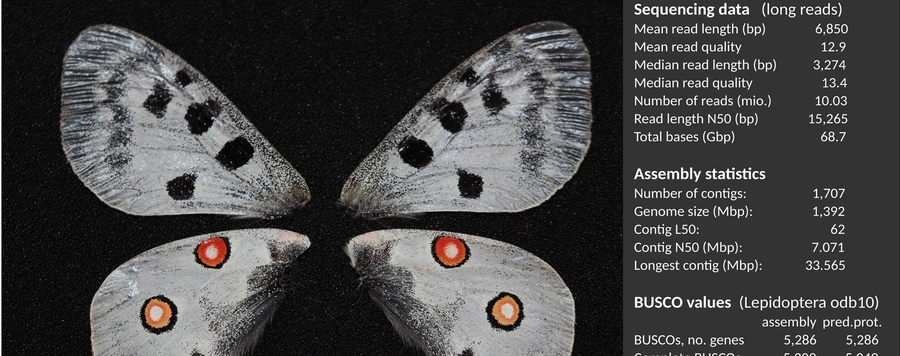
The genome assembly and annotation of the Apollo butterfly Parnassius apollo, a flagship species for conservation biology
Conservation genomics has made dramatic improvements over the past decade, leveraging the power of genomes to infer diverse parameters central to conservation management questions. However, much of this effort has focused upon vertebrate species, despite insects providing similar flagship status with the added benefit of smaller genomes, shorter generation times and extensive historical collections in museums. Here we present the genome of the Apollo butterfly (Parnassius apollo, Papilionidae), an iconic endangered butterfly, which like many species in this genus, needs conservation genomic attention yet lacks a genome. Using 68.7 Gb of long-read data (N50 = 15.2 kb) we assembled a 1.4 Gb genome for the Apollo butterfly, making this the largest sequenced Lepidopteran genome to date. The assembly was highly contiguous (N50 = 7.1 Mb) and complete (97% of Lepidopteran BUSCOs were single-copy and complete) and consisted of 1,707 contigs. Using RNAseq data and Arthropoda proteins, we annotated 28.3K genes. Alignment with the closest-related chromosome-level assembly, Papilio bianor, reveals a highly conserved chromosomal organization, albeit genome size is highly expanded in the Apollo butterfly, due primarily to a dramatic increase in repetitive element content. Using this alignment for superscaffolding places the P. apollo genome in to 31 chromosomal scaffolds, and together with our functional annotation, provides an essential resource for advancing conservation genomics in a flagship species for insect conservation.





